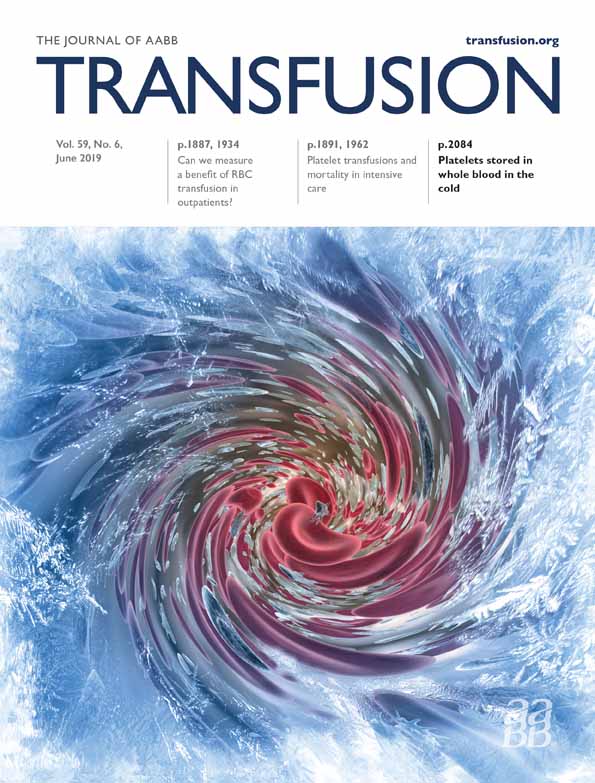Prevention of hemolytic transfusion reactions with intravenous immunoglobulin prophylaxis in U– patients with anti-U
Abstract
BACKGROUND
The U– phenotype is extremely rare and is found predominantly in black African populations at a frequency of between 0.2 and 1.7%. In European populations, U– units are therefore rare, with limited availability in the United Kingdom. Anti-U is clinically significant and is known to cause hemolytic transfusion reactions (HTRs) and hemolytic disease of the fetus and newborn. It has been suggested that intravenous immunoglobulin (IVIG) may be considered as an option among supportive therapy for urgent transfusion when clinically significant antigen-matched units are not available. We report three cases with anti-U transfused with least-incompatible RBC units, their outcomes, and their clinical management.
STUDY DESIGN AND METHODS
Intravenous immunoglobulin was prescribed when least-incompatible units must be issued in patients with anti-U to ameliorate acute HTR and prevent the development of delayed HTR. We report the outcome of these cases.
RESULTS
Of the case reports described, one patient with weak anti-U developed a delayed HTR after transfusion with incompatible units due to an anamnestic response. Two additional patients are described, with the use of IVIG as a precautionary measure to prevent the development of HTRs when transfused with antigen-positive incompatible units. No acute HTRs or delayed HTRs were noted upon follow-up.
CONCLUSION
U– units are not always readily available and transfusion support requires close collaborative working among a multidisciplinary team. Transfusion with antigen-positive incompatible units with IVIG cover both ameliorates acute HTRs and prevents the development of delayed HTRs.




